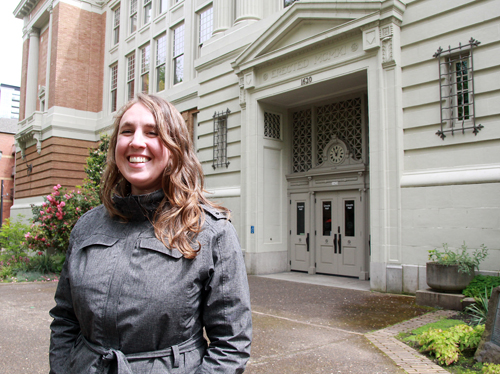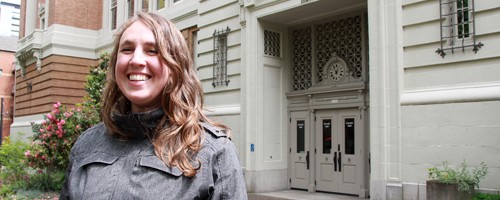Portland State has been re-named to the Princeton Review’s Guide to Green Colleges. Published every April, the guide highlights the “greenest” 322 U.S. colleges in recognition of efforts toward sustainability. PSU is recognized for being “a national leader in community-based learning” and a wide range of green initiatives spearheaded by two internal departments: the Institute for Sustainable Solutions and the Campus Sustainability Office.
Staying green

Portland State has been re-named to the Princeton Review’s Guide to Green Colleges. Published every April, the guide highlights the “greenest” 322 U.S. colleges in recognition of efforts toward sustainability. PSU is recognized for being “a national leader in community-based learning” and a wide range of green initiatives spearheaded by two internal departments: the Institute for Sustainable Solutions and the Campus Sustainability Office.
The guide recognizes many features of PSU’s environmental efforts, such as: “Freshmen may choose to live in a Sustainability Living Learning Community, while students visiting the new LEED Gold Recreation Center (opened 2010) can generate energy on exercise equipment and flush with rainwater.”
Additionally, the guide pointed to the university’s seven Leadership in Energy and Environmental Design-certified buildings, as well as the minor and graduate certificate in sustainability.
Schools were chosen based on specific criteria, including: “The percentage of food expenditures that goes toward local, organic or otherwise environmentally preferable food”; whether the school offers alternative transportation options; overall waste diversion rate; the percentage of energy consumption that comes from renewable sources; and “whether the school has an environmental studies major, minor or concentration.”
One of the most striking parts of the report is the listing of a $25 million gift from the James F. and Marion L. Miller Foundation to PSU for use in the area of sustainability.
Fletcher Beaudoin, partnerships director with the ISS, confirmed that it is the largest single donation that PSU has ever received and that it is being used entirely on sustainability-related projects.
The institute’s website goes into further detail on the gift, stating: “The $25 million Miller grant focuses on PSU’s academic, research and engagement activities in sustainability,” and that it will be slowly administrated over the next 10 years. Specifically, it will be used to hire new faculty members and fund research projects and student scholarships, among other uses.
On the significance of the Princeton Review’s report, Molly Bressers, program and outreach coordinator for the Campus Sustainability Office said, “It’s important for us to be listed again because it reflects the value of sustainability that permeates PSU.” This culture is becoming increasingly evident on campus with more and more green policy decisions. Bressers explained that one of the recent policy changes the CSO is helping to implement is new computer power-management settings for all network-attached computers.
The changes will save energy, part of the CSO’s ongoing climate action plan. The CSO website explained that computers use an average of 200 watts of energy while in use, and only 20 watts while sleeping. The power-management settings will have an impact across campus by standardizing the way idle computers manage their energy consumption.
Beaudoin explained how some of this policy is being implemented at PSU: he said that the ISS mainly focuses on academics, research and outreach, while the CSO focuses on the actual operations of “greening” our campus.
“One of the recent things [the ISS] is working on is integrating academics with operations,” Beaudoin said. He explained that PSU is using senior capstone courses to come up with solutions that the university is actually utilizing.
As an example, he pointed to the green screen on the first floor of Smith Memorial Student Union, which provides the building’s real-time resource usage data for students and the general public to see. One idea, brainstormed during capstone research, is to expand on this: “One of the things the students are working on is portable green screens to provide this energy data all over campus,” Beaudoin said.
Another capstone project Beaudoin remarked on involves analyzing the travel impact of university-related business trips and exploring ways to minimize the footprint. “Business trips are actually 10 percent of PSU’s carbon footprint,” he said. Beaudoin was enthusiastic about the ways that PSU has been able to integrate its environmental goals with its curriculum.
Beaudoin concluded that overall, the “the ISS is helping to use sustainability as a lens to raise the collective profile at PSU.”
The Princeton Review’s Guide to Green Colleges can be found at www.princetonreview.com/green-guide.aspx.





